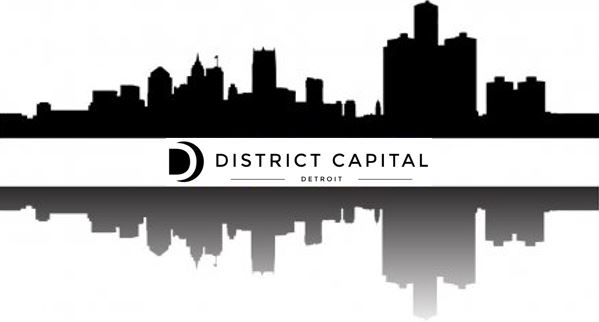The team at District Capital wishes everyone a Happy New Year and a safe and prosperous 2021! We want to thank our clients, lenders, vendors, affiliates, friends and family for the continued support and business during this last year. We understand how differently people and businesses have been affected by the events from 2020. In talking with many of our clients, some of them had their best year ever, while others struggled from something outside of their control. Despite the turmoil, the capital markets have held up remarkably well. Rates, while recently climbing, are still very low and liquidity is abundant. Here is a quick look across the main lines of active capital for commercial real estate:
Life Insurance Debt: This lender class continues to be very active, while maintaining a selective approach. Historic consistent cash flows, strong sponsorship, well located real estate and a reasonable basis are the primary focus for these balance sheet lenders. Current rates are near historic lows while appetite for yield is at its peak. For the appropriate structured deal, a borrower can expect rates as low as 2.25% up to 3.50% for long term 10-year fixed rate paper. Life insurance companies can fix rates for up to 30 years. Expect LTV’s to be in the 60-65% range and amortization of 25 years. District Capital has relationships and access to over 40 active life insurance debt providers. All life insurance loan servicing is done in-house through our Detroit office.
Agency Debt: Fannie, Freddie and HUD continue to write loans at a breakneck pace. It is still the cheapest debt in the market for multi-family real estate. However, in late 2020 the FHFA announced 2021 multi-family loan purchase caps will be set at $70 Billion for each Fannie and Freddie. Of that amount, 50% must be mission-driven lending. This cap 12.5% lower than 2020 caps, in terms of loan volume. Given the high 2020 year-end loan applications, Fannie and Freddie expect to hit their caps sooner in 2021. Current volume, coupled with a new administration, is pushing G&S spreads out and pricing is beginning to widen from 2020 lows. Borrowers can still expect 75% LTV, 10-year fixed rates in the 3%-3.25% range but rates could slowly increase throughout the year. Both Fannie Mae and Freddie Mac continue to maintain COVID-19 reserves (between 6-12 months of principal and interest) held back upfront. District Capital closed over $250,000,000 of agency related debt in 2020 with our correspondent agency relationships.
CMBS: An insatiable appetite for yield coupled with healthier bond pools continue to fuel the commercial mortgage-backed securities markets (CMBS), pushing AAA spreads to their 12-month lows. While most CMBS bookrunners are hamstrung by what they can lend on today, they were still able to securitize $54 Billion in 2020. Half of that total was single borrower securitizations which means only $27 Billon closed as typical conduit aggregation execution - where most transactions end up. To put this figure in prospective, CBMS volume in 2006 was $200+ BILLION! CMBS is still having a difficult time with retail and hotel asset classes. We anticipate this will begin to change in 2021 as most retail loans on bookrunners balance sheets will have been securitized allowing them to free up capacity. Time will also provide a clearer picture of which retailers made it, which failed and how the vaccine plays out. CMBS is currently active in industrial, office, multifamily and storage assets. With spreads at near all-time lows, a borrower can expect rates in the low to mid 3% range for 70% LTV, 10-year fixed rate loans. If a borrower is willing to reduce leverage to below 65%, they can expect full term interest only debt. District Capital has direct access to every active CMBS platform in the market. We understand the negative stigma associated with the servicing of a CMBS loan, so we also service these loans in-house to alleviate any potential post-closing issues.
Bridge/Debt Funds: 2020 was been a very interesting year for bridge lending. The business completely stopped during the spring and early summer. Since bridge loans are short-term in nature and heavily reliant on forecasting cash flows into the future, the economic uncertainty caused by COVID-19 forced most firms to table their bridge programs. As the world began to (somewhat) understand the virus, news of a vaccine on the horizon, and economic forecasts became clearer, bridge lending partially opened up in the second half of the year. However, most bridge lenders are underwriting deals more conservatively and preferred to only lend on property types viewed as safe– multifamily, Industrial, self-storage. Currently, we are seeing coupons as low as 4.00% on lower leverage, moderate lift, multifamily deals with rates higher for other commercial real estate products. District Capital closed numerous bridge loans in 2020, which allowed us to build a deep roster of reliable, high certainty of execution bridge lenders.
Banks: Banks remain steady local lenders for construction, transitional properties, and mini-perm lending. Despite their over-regulation and being the front line for all PPP lending, local and regional bank lenders were very active in 2020 and poised for a busy 2021. Nearly all bank lending was closed with active clients as banks seek relationship business with repeat borrowers. Banks typically shy away from transactional based loans and would prefer customers have treasury management and other lines within the business. Spreads seem to have risen over the course of 2020 and currently are in a range between L+275-375 range depending on property type and strength/depository relationship of the sponsor.






